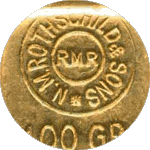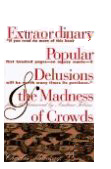



..
 Can we talk? ii Can we talk? ii
Joseph Fasciani
May 24, 2003
I want to thank
the people who responded to my earlier essay here in April. Your questions have
prompted me to respond with what I trust will be useful insights,
and provoke more thought.
It is truly astonishing to watch the tube boobs of finance spewing
out endless blather regarding the economy. To the best of my
knowledge, not one shred of public financial common sense can
be found outside of the Internet. Today, the 22nd May, a financial
whiz on Public Television stated that the US now "owns Iraq."
That's period, end of sentence. This is about as smart as Greenspan
stating before the Senate that a modest recovery has commenced
and it's his job to see to it the paper money supply keeps up.
That's what I term "Greenspanning:" the phenomenon
of building a bridge of green paper from one crisis to another.
Such a bridge has a life span exactly the same as the belief
system of those who use it. What happens when it encounters the
Perfect Storm? Just so did Peter's faith fail and he sank, crying
out "Save me Lord!" But there will be nothing there
for us from the Greenspanners, nothing at all but broken promises.
So much for the "full faith" of our so-called Treasury,
which has seen fit to sell off first its gold reserves, and then
last year emptied the vaults of its entire Strategic Silver Reserve.
Is this why Bill Gates bought 10% of the shares of Pan American
Silver? Silver and gold are vital components of our new technological
industries, yet our Federal government sees no utility in keeping
a significant reserve.
Before leaving Canada in December 1999 (those halcyon days of
yore!), I watched a documentary about The Canada Mint, one of
the country's best known institutions. Toward the end the subject
of pennies came up, their relative worthlessness, and why the
government continues to make them. In fact, said the Mint's representative,
it costs three cents to make each penny. "So why bother?"
asked the interviewer. "Because in Canada," came the
reply, "we consider the penny as a national storehouse of
mineral wealth."
I thought of the steel-grey pennies I'd seen after WW2. Copper
had been priorised to munitions, so steel was 'good enough' for
the lowly cent. Well, so what, you can't buy anything for a penny
anyhow, right? True enough, today, but fifty years ago when I
was a kid I bought candy for that same cent, steel or copper;
today that same candy costs me five cents or more. Which brings
us to three little words: cost, value, and worth.
I think these are right up there with the other big three: "I
love you" and "Prune after bloom!"
If you read my earlier essay, you'll recall that I came down
to help my daughter with her first investment property, a "fixxer-upper"
in San Leandro, California. She had Problems with her equity
speculations, so I tried to help her sort it out. As I was taught
in my Logic and Rhetoric classes, it's best to start with basic
premises and definitions. So I asked her what was the difference--if
any--between cost, value, and worth. Are they the same? If not,
in what way are they different?
My daughter's a lot smarter than I am: she's a graduate Civil
Engineer from one of the two best schools in the US for Engineering,
the University of California at Berkeley. The other's M.I.T.,
or so I'm told. I asked her about these three, cost, value, and
worth, in late Summer 2000, and I'm still waiting for an answer.
But she's pretty busy, and asked me to look after her investments.
Most people are awfully busy and stressed these days, so I agreed.
Except my idea of what constitutes cost, value, and worth
are strikingly different from hers. Friends and acquaintances
of hers in Silicon Valley fed her rumours of fast profits to
be made from stock purchases and sales, so I guess she figured
they were good values and worth their cost.
Myself, I would have investigated the firms, researched fundamentals,
thrown in some technical analysis and charting, and finally consulted
the chicken entrails at my local temples of Pluto and Mammon
before parting with my gold and silver. But she didn't, because
someone had told her they were "a sure thing."
You know, like death and taxes.
How sure are gold and silver? Are they worth their cost?
Do you buy them because they are a good value? Before
you answer, ask yourself the same about those paper dollars in
your wallet or purse: What is their value? Are they worth their
cost? I'm willing to bet that if you had $370.00 in paper in
front of you, and there was a shiny Maple Leaf or Gold Eagle
beside it, and you were asked which you preferred, you'd take
the gold. Why?
Is it because you valued the gold more than paper? But
why? Hasn't your "full faith and promise" government
assured you they're the same? Are you of little faith in Greenspanning?
Then why are you still looking to make your fortune in paper
markets?
It doesn't take an Einstein to understand that paper dollars
cannot increase in value unless there is deflation. And
yet someone as astute as Mark Rostenko wrote the other day that
deflation was "a bad thing." How can it possibly be
bad when your fiat money buys more this week than it did last
week? Would you prefer the alternative, inflation? We are not
talking here of buying more paper, but commodities, actual physical
objects of value greater to our sense of worth
than paper.
The last items to blow off the bubble are those most esoteric
of values, and therefore most rarified of cost. I refer to art
sold at auctions and that ever-changing modality known as "collectibles,"
wherein the madness of our contemporaries stands revealed, full-blown
and naked. At this point our values are reduced to pure
fantasy and cultural biases, whatever they may be. Some will
even die for these illusions. So be it.
Gold and silver are not illusions.
They are of immense importance in our technically oriented societies,
and in fact are irreplaceable in many industrial and military
applications. Every time you cheered when a cruise missile exploded,
you were celebrating the vapourising of an ounce of gold, and
several of silver. How much was in Columbia's body I don't know,
but be assured they were both there in goodly amounts, as my
old chemistry teacher would say.
My landlord is from El Salvador. He brought home a national newspaper
of that country, El Diario de Hoy. El Salvador has replaced its
currency with the US dollar, so it's easy to follow similar commodities.
Check out these prices: Isuza 1/2 ton pickup w/standard cab,
$11,900; w/crewcab, $13,700; 3.5 ton cabover w/European style
multi-task bed, $16,700, and all these include the oxymoronic
"value-added tax!" Now go to your local dealer and
get their "best price" and ask yourself "How can
this be?" Of course, there are no "interest free"
plans, and the credit available is at 8.25%, but hey, that's
the cost of ownership when the vehicles are imported from
deflationary Japan.
Why do these cost less there? Are they somehow worth
less? Isn't the US dollar supposed to have been so strong these
past ten years (i.e., worth more), that we've floated
the world on them, and brought the world's commerce here? Millions
of jobs were exported for this "miracle" of trickle-down
voodoo, yet the US is locked in a stagflation that has no foreseeable
end.
Stratospherically priced art objects, exotic cars, jewelry and
other vanities abound, yet in the midst of this supposed wealth
we do not have gold and silver currency. Why? Are they not equal
to the task?
Why shouldn't we have the advantages they offer in durability,
staying power, and storehouse of mineral wealth? Or is it that
The Powers That Be are all-too-aware that there simply is not
enough gold and silver to represent the "value" of
fiat money without a huge deflation?
In closing, let me recount the after-dinner talk between myself
and some investors, mostly in real estate, at an attorney's $3.5
million dollar house last weekend. This house, when built twenty-five
years ago, with its five acres on Palomeares Creek sold for $350,000.
Two were lamenting they had to lower the rents they charge as
much as 25% to attract tenants, yet this amount wouldn't pay
their costs. But another was seeking to buy, so he was happy
that property prices were coming down. Two sides of the same
coin, eh? Yet how many bother to look at the edge: is it milled,
or engraved with a message, as many European coins were? And
what is that message?
Could it be, as Shakespeare wrote, that " ...there's nothing
good nor bad, but thinking makes it so"?
 Joseph Fasciani Joseph Fasciani
May 24, 2003
Also by Joseph Fasciani
Apr 21, 2003 Can
we talk?
________________
321gold
Inc Miami USA

|